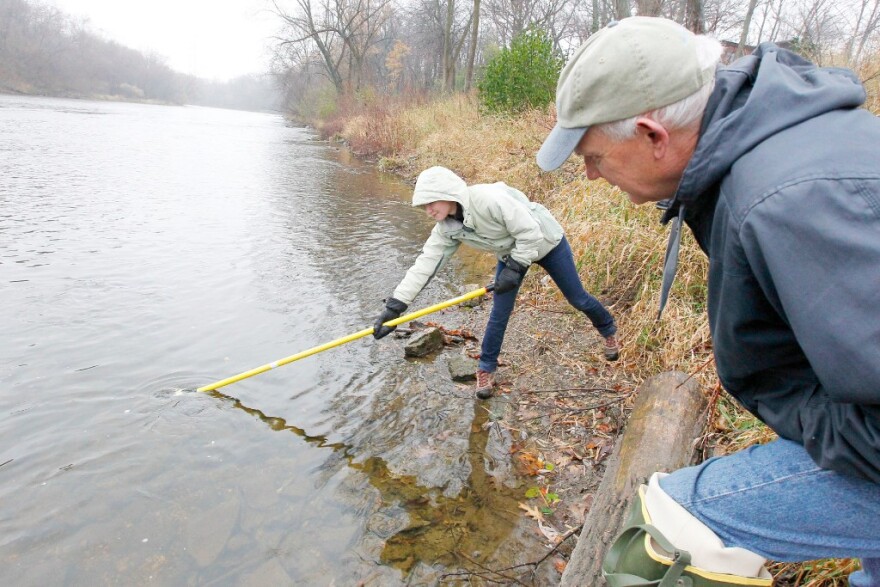For many, Thanksgiving launches a season of holiday cheer and perhaps more eating than usual.
Water advocates are seizing the opportunity to try to turn people’s attention to our local watershed. How much of that Thanksgiving residue will wind up in local waterways?
Milwaukee Riverkeeper, Urban Ecology Center and Carroll University are partnering in the project, along with the UWM School of Freshwater Sciences.

Its dean, scientist Val Klump stands along the Milwaukee River, as a technician fastened a bottle to the end of 6-foot pole, and is dipping in and out of the swiftly flowing stream. This is happening on the Kinnickinnic and Menomonee, too.
A few days after Thanksgiving, others will draw bottlefuls at the same spots.
Klump says the idea is to see if trace amounts of holiday behavior “bounce” in the river.
One of the interesting things I have seen elsewhere, not here e yet, because we haven’t done it, is three days after Thanksgiving a big spike in vanilla and cinnamon. People get that, oh I know where that’s coming from,” Klump says.
That connection is what Klump hopes the snapshot provides.
“To give people a feeling for the fact that they actually impact waters in ways they actually may not know,” Klump says.
And whatever finds its way into Milwaukee’s rivers, sooner or later, flows into Lake Michigan.
“I think a lot of people are familiar with the fact that there are pharmaceuticals in the lake and sort of have vague idea how that happens – but not everybody takes drugs X, Y or Z,” Klump says.
Researchers will use sophisticated gadgets to determine what lurks in samples of water – on the Milwaukee, Menomonee and Kinnickinnic rivers.
“It’s done on a gas chromatograph MAss spectrometer system, which will basically take a mixture of things and can separate them out, and each time a compound is separated from the mixture you can quantify it,” Klump says.
Klump says, for example, caffeine puts out a strong signal, but other substances may be more challenging to identify.
That search is part of a deeper, yearlong study the UWM School of Freshwater Sciences is coordinating into human impacts on our waterways
“We take our water infrastructure for granted. You turn the tap and flush the toilet and don’t think of where it goes after that. And the truth of the matter is, we treat sewage extremely well – but they can’t get everything and some of it gets into our water supply,” Klump says.
Klump and his colleagues will release the initial holiday impact results in mid-December.
The scientist hopes the Thanksgiving-tide sampling becomes an annual barometer.




